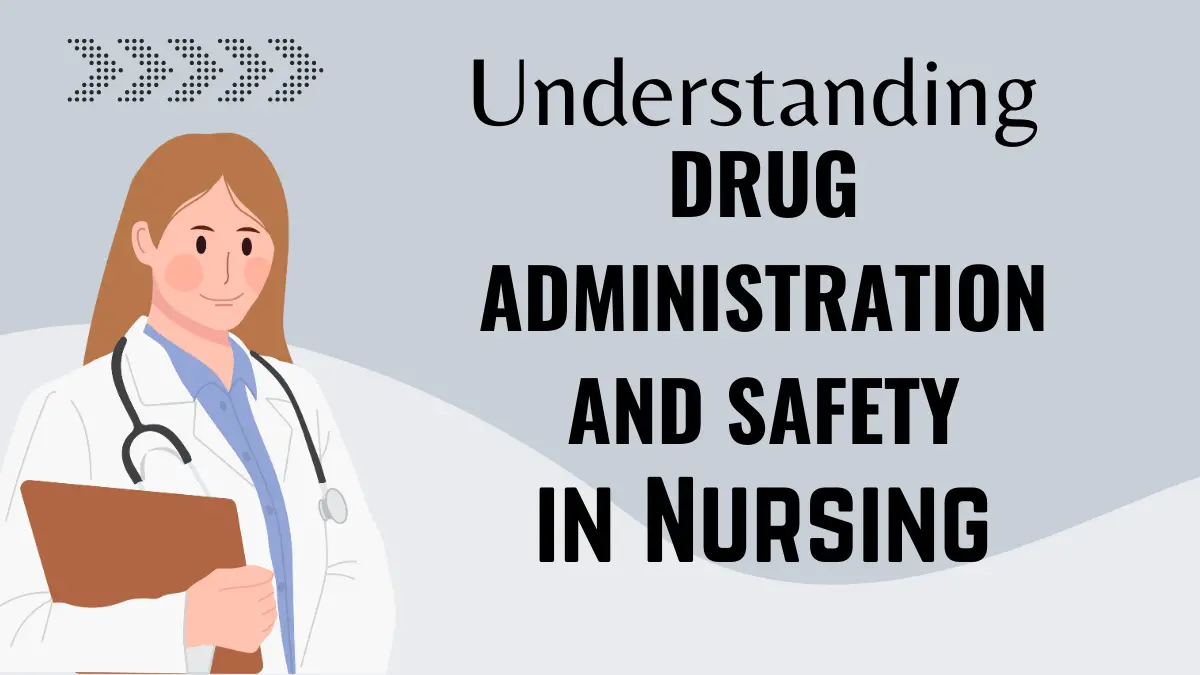In the realm of healthcare, nursing stands as a pivotal profession, with nurses often being the frontline caregivers responsible for various aspects of patient care, including drug administration. Understanding the intricacies of drug administration and ensuring patient safety in this process are paramount for nurses. This comprehensive guide delves into the essentials of drug administration, emphasizing safety protocols, best practices, and the role of nurses in optimizing patient outcomes.
Table: Common Medication Abbreviations
| Abbreviation | Meaning |
|---|---|
| PO | By mouth (per os) |
| IV | Intravenous |
| IM | Intramuscular |
| SC | Subcutaneous |
| PRN | As needed (pro re nata) |
| QD | Once daily (quaque die) |
| BID | Twice daily (bis in die) |
| TID | Three times daily (ter in die) |
| QID | Four times daily (quater in die) |
1. The Importance of Drug Administration in Nursing
Drug administration is a fundamental aspect of nursing practice, involving the delivery of medications to patients as prescribed by healthcare providers. This process is crucial for managing various health conditions, alleviating symptoms, and promoting recovery. Nurses play a pivotal role in ensuring the safe and effective administration of drugs, acting as advocates for patients while adhering to established protocols and guidelines.
2. Principles of Safe Drug Administration
Ensuring patient safety during drug administration requires adherence to established principles and protocols. These principles include:
- Right Patient: Verifying the patient’s identity before administering any medication to prevent errors.
- Right Medication: Confirming the prescribed medication matches the medication order and is appropriate for the patient’s condition.
- Right Dose: Calculating and administering the correct dosage based on the patient’s age, weight, and medical history.
- Right Route: Administering the medication via the correct route (e.g., oral, intravenous, intramuscular) as prescribed by the healthcare provider.
- Right Time: Administering medications at the prescribed time intervals to maintain therapeutic effectiveness.
- Right Documentation: Recording all medication administrations accurately in the patient’s medical records.
3. Common Routes of Drug Administration
Drug administration can occur via various routes, each with its advantages, considerations, and potential complications. The most common routes of drug administration in nursing include:
- Oral: Administering medications via the mouth, either in solid or liquid form.
- Intravenous (IV): Delivering medications directly into the bloodstream through a vein, ensuring rapid onset of action.
- Intramuscular (IM): Injecting medications into muscle tissue, allowing for slower absorption compared to IV administration.
- Subcutaneous (SC): Administering medications into the fatty tissue layer beneath the skin, facilitating gradual absorption.
- Topical: Applying medications directly to the skin or mucous membranes for localized or systemic effects.
4. Factors Influencing Drug Administration
Several factors can influence the process of drug administration in nursing practice. These factors include:
- Patient Factors: Such as age, weight, renal function, hepatic function, allergies, and concurrent medications, which can impact drug metabolism and response.
- Medication Factors: Including drug interactions, dosage forms, solubility, stability, and pharmacokinetic properties, which affect drug administration and effectiveness.
- Environmental Factors: Such as lighting, noise, distractions, and interruptions, which may impede the nurse’s ability to focus during medication administration.
- Healthcare System Factors: Such as policies, procedures, technology, and resources available within the healthcare setting, which influence the efficiency and safety of drug administration practices.
5. Nursing Responsibilities in Drug Administration
Nurses bear significant responsibilities when it comes to drug administration, encompassing various roles and tasks:
- Assessment: Conducting thorough patient assessments, including medication histories, vital signs, and relevant laboratory values, to inform safe medication administration.
- Education: Providing patients with comprehensive information about prescribed medications, including dosage, administration instructions, potential side effects, and precautions.
- Monitoring: Vigilantly monitoring patients for therapeutic responses, adverse reactions, and drug interactions following medication administration.
- Documentation: Maintaining accurate and timely documentation of all medication administrations, including the drug name, dosage, route, time, and patient response.
- Collaboration: Collaborating with other healthcare professionals, including physicians, pharmacists, and allied health staff, to ensure coordinated and patient-centered care.
6. Ensuring Patient Safety in Drug Administration
Patient safety is paramount in drug administration, and nurses must implement strategies to minimize the risk of errors and adverse events:
- Medication Reconciliation: Conducting thorough medication reconciliation processes to ensure accurate medication lists and prevent discrepancies.
- Double-Checking: Employing independent double-checking procedures for high-risk medications or complex dosing regimens to verify accuracy.
- Bar-Code Medication Administration (BCMA): Utilizing technology such as BCMA systems to verify medication administration at the point of care, reducing errors.
- Continuous Education: Participating in ongoing education and training programs to enhance knowledge and skills related to drug administration and safety practices.
- Error Reporting: Encouraging a culture of open communication and reporting of medication errors or near misses to facilitate learning and quality improvement initiatives.
Conclusion
In conclusion, drug administration is a vital component of nursing practice, requiring meticulous attention to detail, adherence to safety protocols, and effective communication. By understanding the principles, routes, factors, responsibilities, and safety measures associated with drug administration, nurses can optimize patient outcomes and contribute to the delivery of high-quality care. Continual education, collaboration, and a commitment to patient safety are essential in ensuring excellence in drug administration within the nursing profession.


